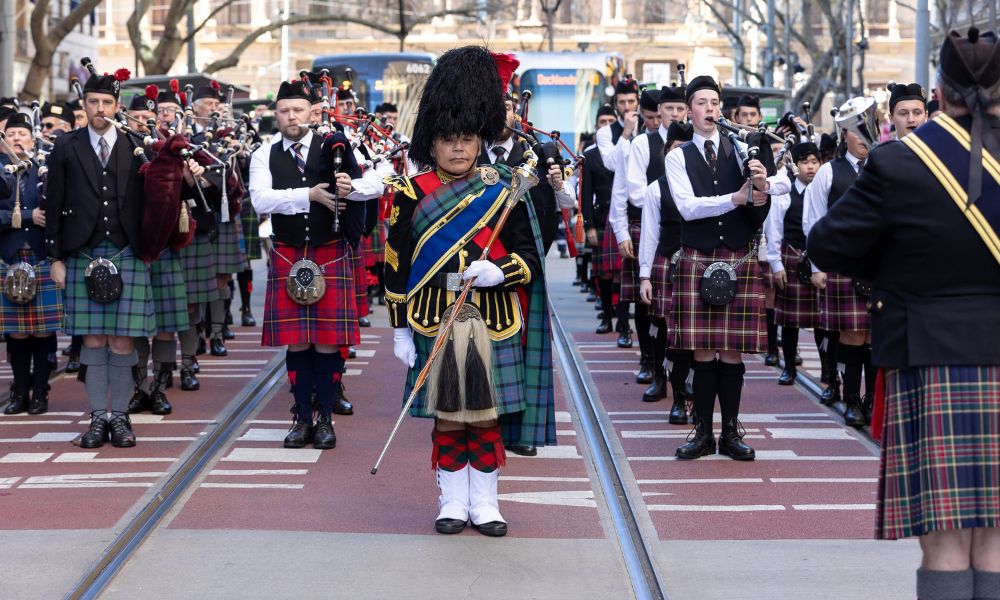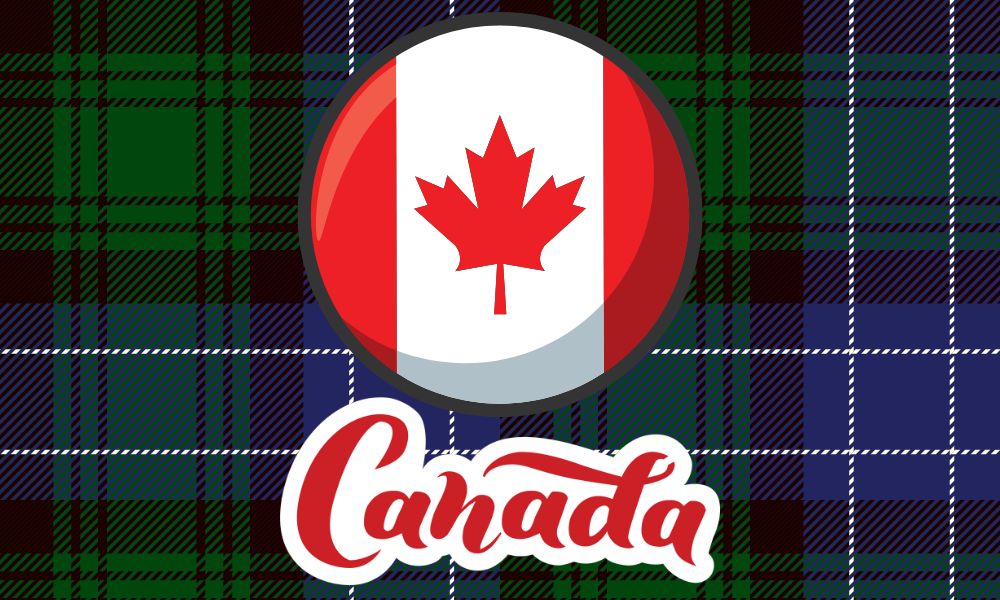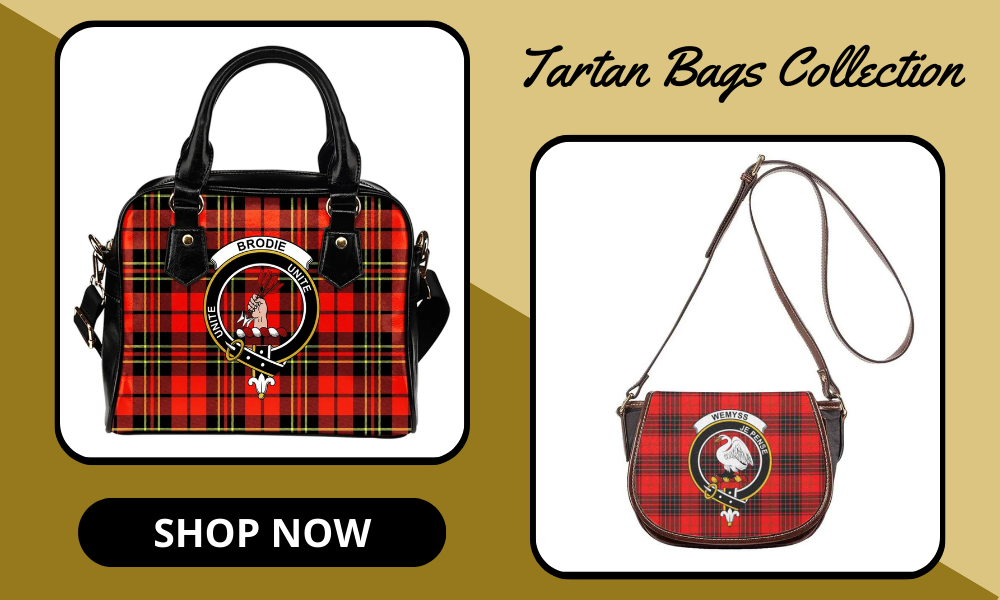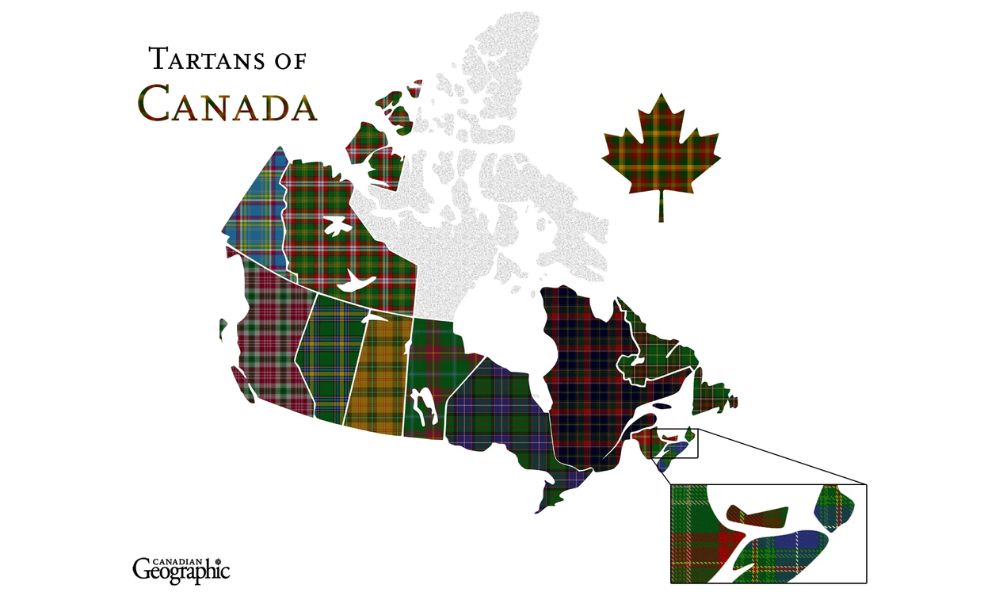Posted by Maris on 12th Mar 2024
10 Facts to Celebrate Tartan Day in Canada
Tartan, a globally identifiable material that unites communities, is a gift from Scotland to the world. Rich in Highland culture, it has evolved into a symbol of protest, patriotism, and luxury design. It even has its own holiday, Tartan Day, which falls on April 6.
What is Tartan Day?

Tartan Day, an annual celebration of Scottish culture, is on April 6, the date of the 1320 AD signing of the Declaration of Arbroath. This statement, which is seen as Scotland's most iconic document, was actually a letter recognizing Scotland's independence that Scottish barons submitted to the Pope.
Ironically, Tartan Day isn't very popular in Scotland, but it's becoming more and more popular in the US, Canada, Australia, and New Zealand as a way for people of Scottish descent to celebrate their heritage. Tartan Day originated in Nova Scotia in the middle of the 1980s, and people there celebrated by going outside in their kilts. Since then, April 6 has been designated as a national holiday by each province government.
How to celebrate Tartan Day in Canada

Tartan Day is observed throughout Canada with ceilidh dances, feasts, and music. For a thrilling free event, highland dancers, drummers, pipers, and Gaelic choirs will assemble on Parliament Hill in Ottawa. In the meanwhile, Scottish societies all throughout Canada commemorate their ancestry and culture with parades and other events.
First came the kilt…

Early in the 1500s, Scottish Highlanders donned the kilt as we know it today. (The word "kilt" comes from the old Norse word "kjilt," which means pleated.) The original checkered patterns, called "setts," were made from sheep's wool that had been dyed with vegetable pigment. These setts didn't develop into the clan tartans that we are familiar with until the early 19th century, according to tartan historian Peter MacDonald. He claims that before then, people would dress whichever they pleased, could afford, or could find. "Those with more money would have consistently wore the finest clothing, frequently in shades of red made with pricey imported dyes."

In reality, what are they wearing under those kilts?
Although custom mandates that a guy should not wear underwear underneath his kilt, today's wearer has a choice. The Scottish military, whose battalions refused to wear underwear beneath their kilts, appears to be the source of the custom. As soldiers came home and friends and family noted the omission, the custom spread throughout society. If "going regimental" doesn't feel right for you, feel free to wear undergarments.
Tartan vs. Plaid: What’s the difference?

Although tartan and plaid are frequently used synonymously in North America, they differ greatly from one another. In technical terms, a "tartan" is a piece of cloth; when it is worn draped over the shoulder, it transforms into a "plaid." These days, a shoulder plaid in a kilt-matching tartan completes any formal Highland ensemble.
Tartan’s debut in Canada
Before Confederation, tartan was a common sight in Canada. The eye-catching material was first worn by Scottish soldiers stationed here for garrison duties in the 1700s. Over the years, the wave of Scottish immigration expanded tartan's allure and sway from coast to coast. The third largest ethnic group in Canada, with almost 5 million people claiming Scottish ancestry, tartan is still widely used in everything from school uniforms to basic lumberjack flannel shirts.
We have our own Canadian tartan

Parliament proclaimed the Maple Leaf Tartan to be the official tartan of Canada in 2011. In preparation for the 100th anniversary of Confederation in 1967, this asymmetric pattern was created in 1964. Rich in symbolism, Maple Leaf Tartan is a visual representation of Scottish tradition and culture. Its colors, which include deep green, gold, scarlet, and brown, represent the stages of a maple leaf's life cycle. The Maple Leaf Tartan is now an official symbol of Canada, joining our nation's other notable symbols, the Coat of Arms and National Flag. With the exception of Quebec, every Canadian province and territory has its own tartan that is registered and recognized by the government.
The tartan relationship of the Royal Family
When King George IV visited Scotland in 1822, it was a historic event. Highland Chiefs were urged to wear their clan tartans as part of the pageantry, and he was the first British king to visit in nearly a century. This is particularly noteworthy because George II, the ancestor of George IV, established the Dress Act of 1746, outlawing the wearing of any type of Highland attire, less than a century ago. Tartan remained fashionable throughout the 19th century, thanks in part to Queen Victoria's fondness for Highland attire. More recently, the late Queen Elizabeth II's love of Scotland was demonstrated by her regular tartan ensembles and her 1947 wedding, where the pageboys wore Royal Stewart kilts.
Why The Crown Was Wrong About Balmoral Tartan

Balmoral Tartan was created in 1857 by Queen Victoria's husband, Prince Albert, and was called for their estate and castle in Aberdeenshire, Scotland. Wearing this unique gray pattern is restricted to what the king specifies because it is private property of the Royal Family. Actually, the only person permitted to wear it outside of the Royal Family is The Piper to the Sovereign, King Charles's personal piper, who performs every day at nine in the morning.
Though The Crown on Netflix goes to considerable pains to authentically recreate Royal clothing, it is understandable that Jonathan Pryce, who plays Prince Philip in Season Five, did not receive approval from the Sovereign. Prince Philip wears a grey tartan that is similar to, but different from, the official Balmoral tartan.
Exploring tartan’s roots in Scotland
Of course, Scotland itself is the best place to review the rich history of tartan.
King George VI originally issued Kinloch Anderson's Royal Warrant of Appointment to the kilt producers for the modern Royal Family in 1934. The next time tourists are in Edinburgh, they should check out their chic-looking shop (above) and miniature museum.

